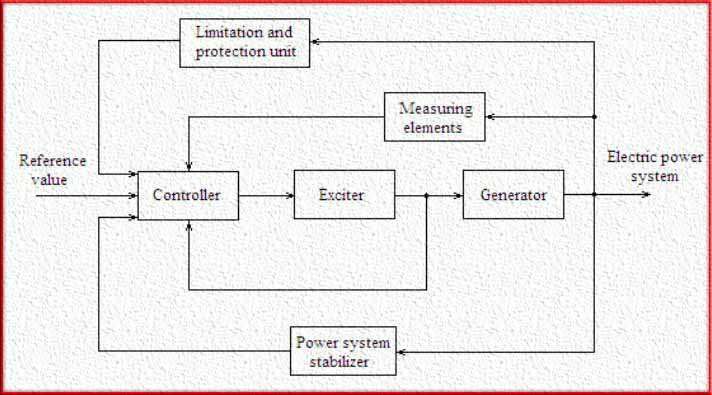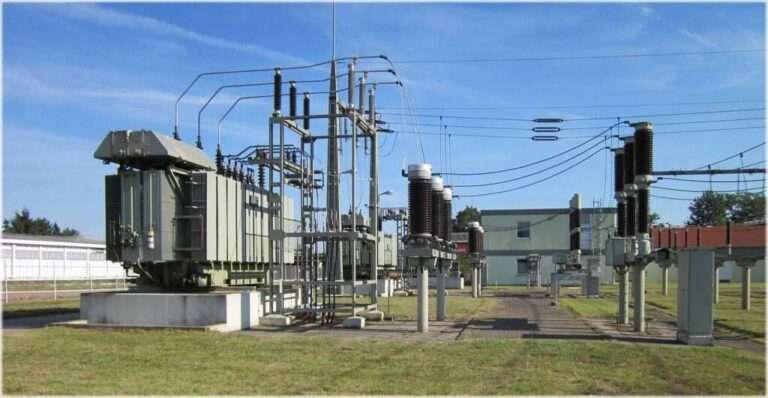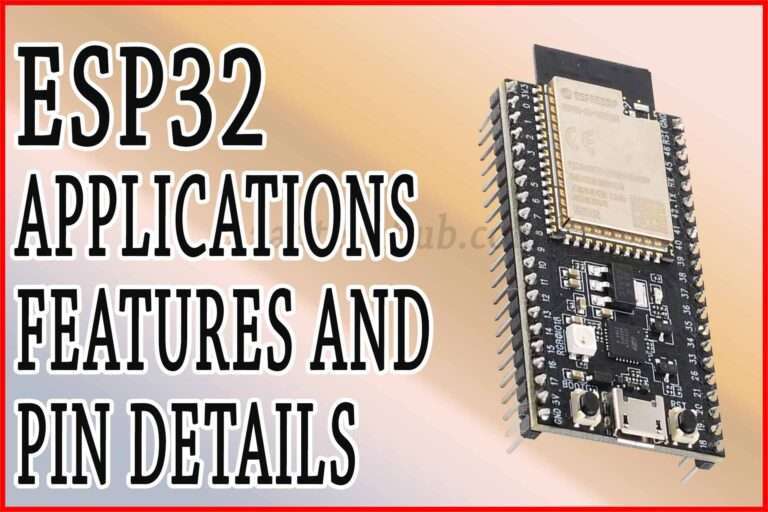Excitation System Models of Synchronous Generator
The excitation system models of a synchronous generator are mathematical representations that simulate the behavior and dynamics of the excitation system. These models are used in power system studies, stability analysis, and control design.
Read More

By accurately representing the excitation system’s response to changes in electrical and mechanical conditions, these models enable engineers to analyze and optimize the generator’s performance and stability.
Types of Excitation System Models
Static Model
The static model represents the excitation system as a linear or nonlinear transfer function that relates the generator’s terminal voltage to the field current. It considers the steady-state behavior of the excitation system and assumes that the response is instantaneous.

The static model is widely used for simple stability analysis and power flow calculations.
Dynamic Model
The dynamic model provides a more detailed representation of the excitation system by incorporating the system’s dynamic response. It considers the time-dependent behavior of the excitation system components and their interactions.
The dynamic model includes differential equations that describe the response of the exciter, AVR, and other control loops. It enables engineers to analyze the system’s transient stability, response to disturbances, and control performance.
Detailed Model
The detailed model provides a high-fidelity representation of the excitation system. It considers the nonlinear behavior, saturation effects, and component characteristics. The detailed model incorporates specific parameters and characteristics of the generator, exciter, AVR, and other components.
This model is particularly useful for advanced stability analysis, fault studies, and designing advanced control strategies.
Model Validation and Parameter Estimation
To ensure accurate simulation results, the excitation system models need to be validated and calibrated using measured data. The model validation process involves comparing the model’s response with the actual system response under various operating conditions and disturbances.
Any discrepancies are identified and adjustments are made to improve the model’s accuracy.
Parameter estimation is an essential step in developing excitation system models. It involves determining the values of the model parameters based on measured data or manufacturer specifications.
The parameter estimation process ensures that the model accurately reflects the behavior of the actual excitation system. Techniques such as least squares estimation, system identification, and optimization methods are commonly employed for parameter estimation.
Facts on Excitation System Models of Synchronous Generator
Nonlinear Behavior
Excitation system models often exhibit nonlinear behavior due to the saturation characteristics of the generator and the control devices. These nonlinearities can have a significant impact on the system’s stability and response.
Advanced excitation system models account for these nonlinearities, providing more accurate representations of the system’s behavior.
Voltage Regulator Dynamics
The dynamic response of the AVR in the excitation system is crucial for maintaining the generator’s voltage stability. The time constant of the AVR determines how quickly it adjusts the field current in response to voltage deviations.
The excitation system models capture the dynamics of the voltage regulator, allowing engineers to analyze its impact on the generator’s voltage control and stability.
Field Current Limits
Excitation system models take into account the limits on the field current imposed by the generator’s design and protection systems. These limits ensure that the field current remains within safe operating ranges.
By considering the field current limits in the model, engineers can assess the generator’s performance and stability under different operating conditions.
Control System Interaction
The excitation system models capture the interaction between different control loops within the system. The dynamic behavior of the exciter, AVR, power system stabilizer (PSS), and other control devices are considered to understand their collective impact on the generator’s stability.
Modeling these interactions provides insights into the system’s overall performance and aids in designing effective control strategies.
Model Validation Challenges
Validating excitation system models can be challenging due to limited access to real-time data and the complexity of the system. Obtaining accurate and comprehensive measurements of the generator’s response under different conditions is crucial for model validation.
Additionally, ensuring that the model accurately represents the nonlinear behavior and transient response of the excitation system requires careful calibration and testing.
In conclusion, excitation system models of synchronous generators provide mathematical representations of the system’s behavior and dynamics. These models, including static, dynamic, and detailed models, are used for power system analysis, stability studies, and control design.
They capture the nonlinear behavior, voltage regulator dynamics, field current limits, and control system interactions. Model validation and parameter estimation are essential steps to ensure accurate simulation results.
Despite challenges in model validation, these models are valuable tools for understanding and optimizing the performance and stability of synchronous generators.
Related Posts:
- Excitation Systems: Components & 4 Important Methods
- Automatic Stator Winding Machine: Best Guide
- Induction Motor: Important Types, Construction & Working
- What is Demand Factor and Diversity Factor? Quick Concepts
- Power Triangle: Best Applications You Need to Know
Follow us on LinkedIn”Electrical Insights” to get the latest updates in Electrical Engineering. You can also Follow us LinkedIn and Facebook to see our latest posts on Electrical Engineering Topics.





